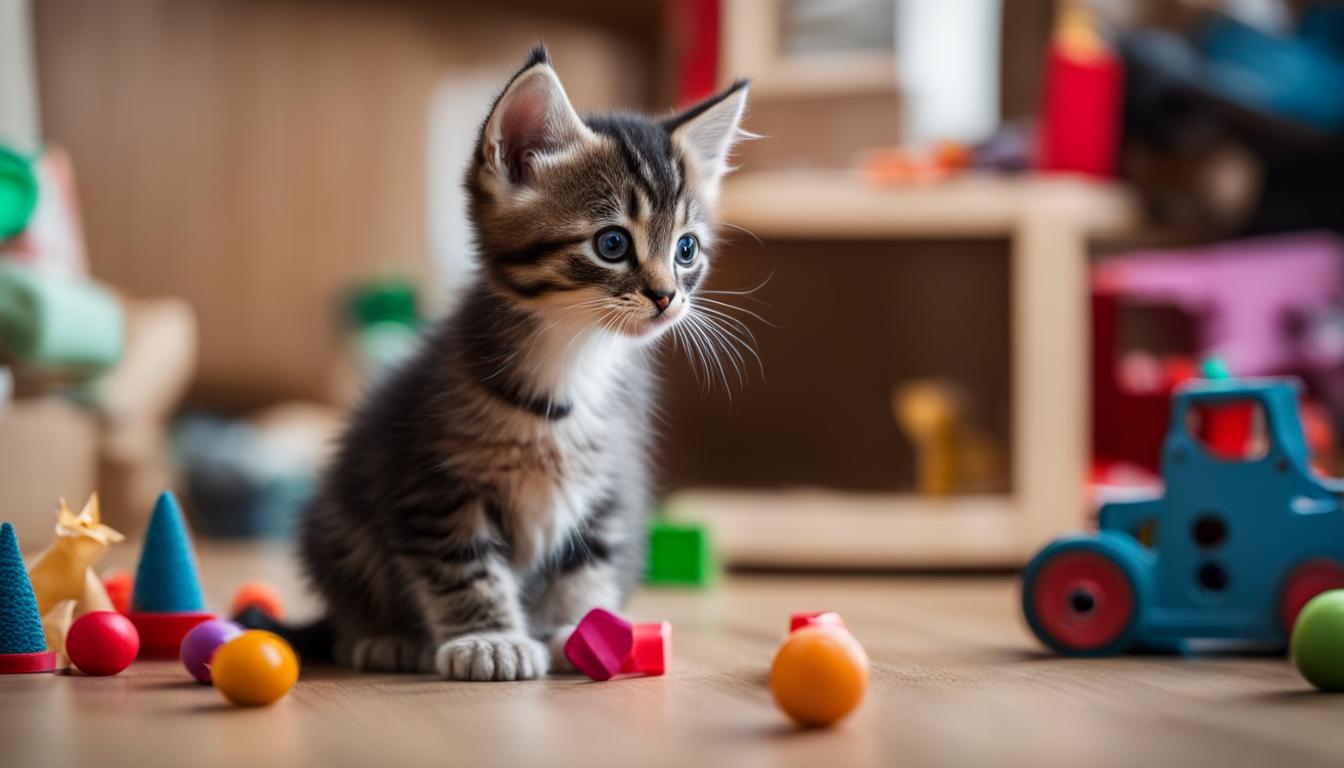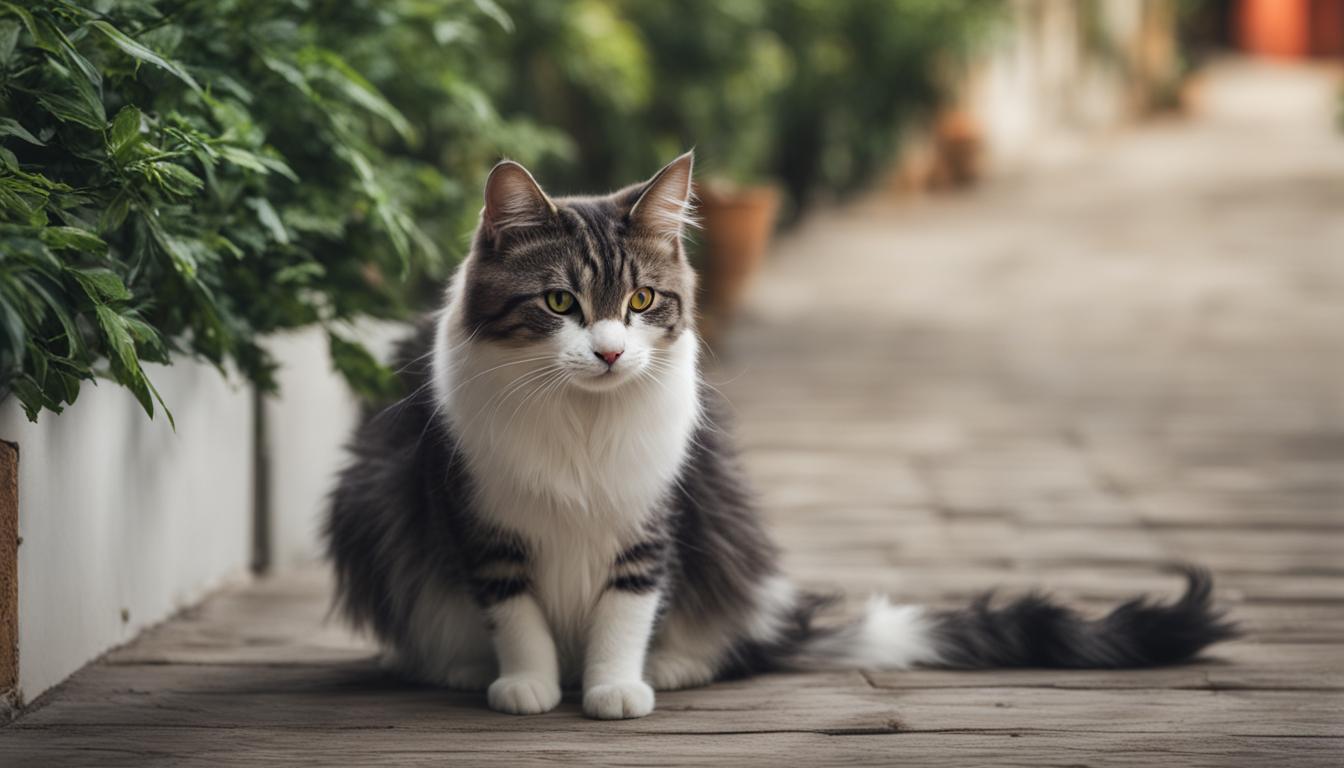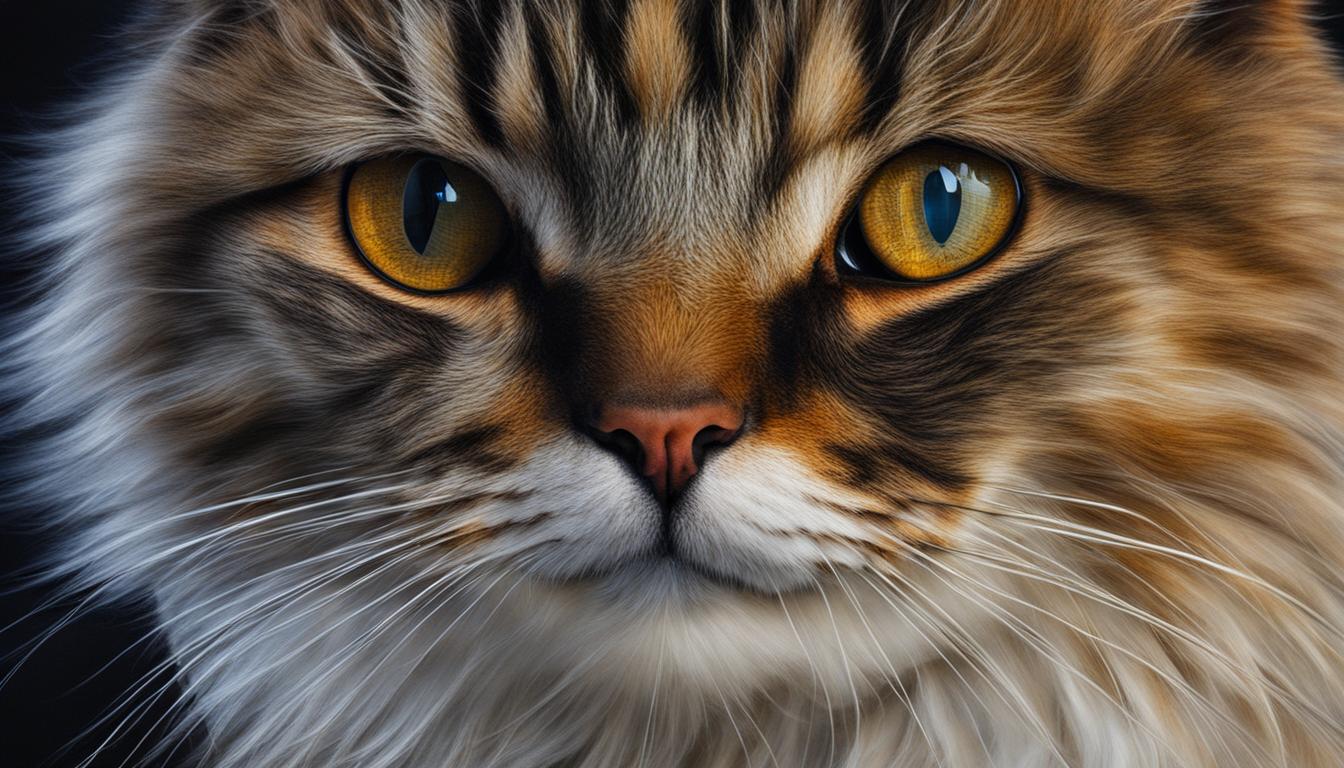When it comes to cats, their behavior and personality are not just a result of genetics. Early socialization plays a vital role in shaping who they become. As a passionate cat lover, I’ve always been curious about the effects of early socialization on our feline friends. So, I decided to dig deeper into the topic and discover the fascinating insights that researchers have uncovered.
But before we dive into the details, let’s take a moment to appreciate the significance of early socialization in cats. Just like humans, cats go through critical socialization periods in their early lives. These periods are crucial for their development and influence how they interact with the world around them. From kittens to adult cats, the impact of early socialization can be profound.
Key Takeaways:
- Early socialization plays a crucial role in shaping a cat’s behavior and personality.
- Cats go through critical socialization periods in their early lives.
- The impact of early socialization can be profound.
- Understanding the effects of early socialization is essential for cat owners.
- Proper socialization helps cats develop positive associations with humans and other animals.
The Benefits of Early Cat Socialization
Early cat socialization has numerous benefits. Socializing feral kittens is crucial to ensure they grow up to be well-adjusted, friendly cats. Feral kittens can be socialized through a process known as TNR (Trap, Neuter, Return), where they are captured, neutered or spayed, and then returned to their colony. This helps prevent overpopulation and allows caretakers to socialize and find homes for the kittens.
Cat socialization techniques involve gradual exposure to different environments, people, and animals to help them develop confidence and positive associations. Early socialization sets the foundation for a cat’s behavior and helps them become more adaptable and comfortable in various situations.
By providing a safe and nurturing environment during the critical socialization periods, cats learn to trust humans and form strong bonds with their caregivers. They become more inclined to seek affection, enjoy interactive play, and engage in positive behaviors. Socialized cats are also more likely to have successful and lasting adoptions, as their friendly and well-adjusted nature attracts potential adopters.
The Importance of Positive Reinforcement
Positive reinforcement plays a crucial role in early cat socialization. Reward-based training methods, such as clicker training and treats, are effective in shaping desired behaviors and strengthening the bond between cats and humans. By rewarding cats for desirable behaviors, such as using a scratching post or using the litter box, they learn to associate these actions with positive outcomes.
“Proper cat socialization helps create happy, confident, and well-behaved feline companions.”
It is important to note that each cat’s socialization journey is unique, and patience is key. Some cats may be more timid or cautious initially, but with consistent positive experiences, they can overcome their fears and become more outgoing. It is crucial to provide a supportive and enriching environment that encourages exploration and social interaction to ensure the best possible outcome for the cat’s development.
| Benefits of Early Cat Socialization |
|---|
| 1. Increased sociability towards humans and other animals |
| 2. Greater adaptability to new environments and situations |
| 3. Reduced likelihood of fear, stress, and aggression-related behaviors |
| 4. Higher chances of successful adoptions |
| 5. Stronger bond between cats and their caregivers |
With the right socialization techniques and a nurturing environment, cats can thrive and lead fulfilling lives, bringing joy and companionship to their human families. Early cat socialization is an investment in their future well-being, ensuring they grow up to be confident, well-adjusted, and happy feline companions.

The Impact of Socialization on Cat Aggression
Proper socialization significantly influences a cat’s aggression levels and temperament. Cats that have not been adequately socialized may exhibit various signs of poor socialization, including fear, stress, and aggression toward humans and other animals. These behaviors can be problematic and may lead to difficulties in managing the cat’s behavior and potential relinquishment.
One of the primary signs of a poorly socialized cat is fear-related aggression. Cats that have not been exposed to a wide range of people, environments, and stimuli during their critical socialization periods may perceive unfamiliar situations as threats, leading to defensive aggression. This can manifest in behaviors such as hissing, swatting, scratching, or even biting when they feel threatened or scared.
Fortunately, early socialization can help prevent the development of aggressive behaviors in cats. By exposing kittens to positive experiences with humans, animals, and different environments during their critical period, cat owners can help them develop positive associations and confidence. Gradually introducing new stimuli and using positive reinforcement techniques can also help cats feel more comfortable and less threatened in different situations, reducing the likelihood of aggression.
The Critical Periods of Socialization
Understanding the critical periods of socialization in cats is essential for implementing effective strategies. The primary critical period for socialization occurs between two and seven weeks of age, during which kittens are most receptive to new experiences and interactions. However, socialization efforts should continue throughout a cat’s life to maintain and reinforce positive behaviors.
During these critical periods, it is vital to expose kittens to a variety of people, including different ages, genders, and ethnicities, as well as other animals and environments. Positive experiences during this time help cats develop confidence and resilience, making them less likely to respond with aggression later in life.
Strategies for Cat Socialization
Implementing effective strategies for cat socialization is crucial for preventing aggression and ensuring a well-rounded and well-adjusted pet. Here are some strategies to consider:
- Gradual exposure to new people and environments: Introduce cats to new people, places, and stimuli gradually. Start with short and positive interactions, gradually increasing the duration and intensity as the cat becomes more comfortable.
- Positive reinforcement: Use treats, praise, and rewards to reinforce desired behaviors and create positive associations. Reward the cat when they display calm and non-aggressive behaviors in various situations.
- Desensitization and counter-conditioning: If a cat exhibits fear or aggression toward specific triggers, such as loud noises or other animals, desensitize them by gradually exposing them to the trigger in a controlled and positive way. Pair the trigger with something the cat enjoys, like treats or playtime, to create a positive association.
- Consulting with professionals: If a cat’s aggression persists or escalates despite socialization efforts, it is essential to seek guidance from a veterinarian, animal behaviorist, or certified cat trainer who can provide personalized advice and assistance.
By understanding the impact of socialization on cat aggression and implementing appropriate strategies, cat owners can help their feline companions lead happier, healthier, and more balanced lives.
Socializing Cats with Other Pets
When it comes to introducing cats to other pets, a gradual and careful approach is essential. Cats are known for their independent nature, and not all of them will readily accept new furry companions. To ensure a harmonious relationship within the household, it’s important to follow some key steps in socializing cats with other pets.
“A successful introduction depends on allowing the cats to become familiar with each other’s scents before any direct interactions occur,” says Dr. Meowington, a feline behavior expert. “This can be done by swapping bedding, using a pheromone diffuser, or even using a baby gate to create a visual barrier while they get used to each other’s presence.”
Positive reinforcement is a valuable tool in the socialization process. By associating the presence of another pet with something positive, such as treats or praise, cats can develop a positive attitude towards their new companions. It’s important to give each pet their own space, toys, and resources to prevent territorial conflicts. This includes providing separate food and water bowls, litter boxes, and resting areas.
With patience and persistence, cats can learn to coexist peacefully with other pets. While some may form close bonds and engage in playful interactions, others may maintain a more independent relationship. Each cat has its own unique personality, and it’s important to respect their individual preferences and boundaries.
Conclusion
As a cat lover, I am amazed by the profound effects of early cat socialization. It’s incredible how a little effort during those critical periods can shape a cat’s behavior and overall wellbeing. By providing positive experiences and gradually introducing new stimuli, we can help our feline friends develop confidence and positive associations.
One of the most remarkable benefits of early socialization is the reduction in cat aggression. Poorly socialized cats often exhibit fear, stress, and aggression towards humans and other animals. However, with the right strategies in place, we can prevent the development of these problematic behaviors. Offering a safe and positive environment during those critical socialization periods is key.
But it’s not just about preventing negative behaviors. Early socialization promotes harmonious relationships between cats and other pets. By introducing them gradually and allowing them to become familiar with each other’s scents, we set the foundation for a peaceful coexistence. Positive reinforcement, like treats and praise, further strengthens those bonds.
Understanding the importance of early cat socialization and implementing effective techniques is vital. It not only improves their chances of successful adoption but also enhances their overall quality of life. So let’s be proactive in socializing our cats and give them the best chance to thrive and lead fulfilling lives!
FAQ
What is the impact of early socialization on cat behavior?
Early socialization plays a crucial role in shaping a cat’s behavior and personality. It helps them develop positive associations with humans, other animals, and various environments, reducing the likelihood of aggression, fear, and stress-related behaviors.
How do I socialize feral kittens?
Feral kittens can be socialized through a process known as TNR (Trap, Neuter, Return). They are captured, neutered or spayed, and then returned to their colony. This helps prevent overpopulation and allows caretakers to socialize and find homes for the kittens.
What are some cat socialization techniques?
Cat socialization techniques involve gradual exposure to different environments, people, and animals to help them develop confidence and positive associations. This can be done by providing positive experiences, gradually introducing new stimuli, and using positive reinforcement techniques.
How does socialization impact cat aggression?
Cats that have been poorly socialized may exhibit signs of fear, stress, and aggression towards humans and other animals. However, studies have shown that early socialization can help reduce aggression in cats. By providing a safe and positive environment during the critical socialization periods, aggressive behaviors can be prevented.
How do I socialize cats with other pets?
Introducing cats to other pets should be done gradually and carefully. It is important to allow the cats to become familiar with each other’s scents before any direct interactions occur. Using positive reinforcement and providing each pet with their own space and resources can help promote harmonious relationships within the household.





